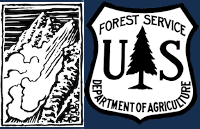Northern Gallatin
poor test scores near history rock
at history rock today we did an extended column test and a regular column test. Both tests were performed a few feet from one and other, and both pits were dug to the ground on a 26ish degree slope. The extended column test fully propagated on the 4th tap from the elbow scoring ectp 14. The regular column test failed after one tap from the wrist. Both failed on the sugary facet near the bottom of the snowpack I did not record any exact depth measurements or perform further tests. estimated coordinates (45.48811,-111.00942) I think it was the first powder field.
Observations from a tour to the SE face of Blackmore
Our party took a slow tour up and down the SE face of Blackmore today. New rollerballs were observed on E aspects, and we witnessed a natural D1 loose wet slide occur on the east face of Blackmore at around 1:00. Dug a quick pit on the way up (NE aspect, ~8700’) out of curiosity about snowpack structure and fracture initiation. HS 110 cm. A compression test yielded CTM (15 taps), with a Q2 resistant planar shear at 60 cm depth. Was surprised to not find faceted snow near the bottom of the pit, despite the avalanche incident that occurred the day prior on the northeast ridge of Blackmore on a similar aspect and elevation.
Still Dry in Portal
Rode up to the head of Portal Creek to area beneath Eaglehead Mtn and then around to the ridge overlooking Hidden Lakes. The trail is very low snow near the Portal Creek trailhead and the snow was wet to the ground beneath a stout crust. As we got higher up the coverage increased and even sunny slopes only had a couple inch thick surface crust over dry snow. On shady slopes there was still dry snow at the surface. We dug on a N aspect at 9400 ft just north of Eaglehead Mtn. The snowpack was 180 cm deep. We got an ECTX, but the facets near the ground were still soft and sheared off cleanly when pulling on the column.
We had no signs of instability today. The only avalanche we saw was a large slide on Eaglehead that had been previously reported over two weeks ago.
Skier triggered, caught and injured near Mt Blackmore
Two skiers were ascending a northeast-facing avalanche path on the northernmost ridgeline of Mount Blackmore around 1 PM when they triggered a large, dry slab avalanche that failed 3 feet deep, 150 feet wide, and ran 500 feet vertical. Debris piled up 4-8 feet deep. The avalanche failed on weak, faceted snow near the base of the snowpack.
As the group was about halfway up the avalanche path, they saw a small slide initiate to their right and then they heard a loud boom as the rest of the slope collapsed 250 feet above them. The skier lower on the path sprinted to the left into the trees to avoid getting caught. The second skier was 30 higher on the slope. He attempted to run off the slope but was unable to avoid getting captured. He was carried to the bottom of the avalanche path, got submerged in the snow, but thankfully came to rest on the surface. His partner initiated a beacon search and called his name, quickly finding him on top of the avalanche debris. The skier sustained significant injuries. They called 911 and Gallatin Country Sheriff Search and Rescue initiated a response with the Helicopter team. The two skiers worked to address injuries while awaiting rescue. GCSAR inserted a team with a helicopter that provided medical treatment and both the injured and uninjured skiers. The GNFAC was on scene to evaluate the scene for hazards to the rescue team.
The avalanche occurred on the northernmost ridgeline in the Mt. Blackmore system near the waypoint at the top of the image. GNFAC/ Gaia
Two skiers were ascending a northeast-facing avalanche path on the northernmost ridgeline of Mount Blackmore around 1 PM when they triggered a large, dry slab avalanche that failed 3 feet deep, 150 feet wide, and ran 500 feet vertical. Debris piled up 4-8 feet deep and broke a number of mature trees. Photo: GNFAC
